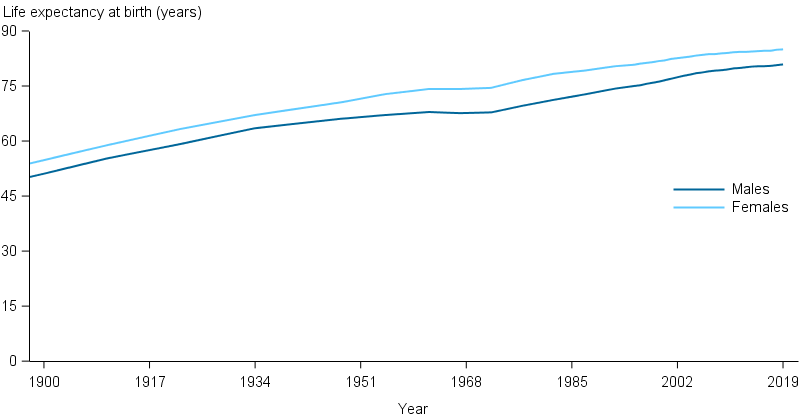Life expectancy is a statistical measure of the average time an organism is expected to live, based on the year of its birth, its current age, and other demographic factors, including sex.
In Australia, the average life expectancy is 80.9 years for males and 85 years for females. This is about ten years longer than people living in the 1950s. Children born today can expect to live even longer than this.
If you were a newborn boy born between 1891 and 1900, you would expect to live to be just 51.1 years old (AIHW,2021).

Aboriginal and Torres Strait Islanders have a lower life expectancy than other Australians. The life expectancy at birth of Aboriginal and Torres Strait Islanders is 8.6 years less than a non-indigenous person. Higher rates of health problems such as acute rheumatic fever and rheumatic heart disease have been a factor in the higher mortality rates (AIHW, 2021).
However, there is plenty of hope for the future. As of 2017, life expectancy has increased by 4.4 years for indigenous boys and 2.7 years for girls (AIHW, 2021).
According to the World Health Organization, Australians have a life expectancy of 83.04 years old, ranking us below countries like Cyprus, Hong Kong, Japan, and Switzerland.
However, we remain an overall leader with one of the highest life expectancies worldwide.
Hong Kong ranks the highest, with an average lifespan of 85.29 years old. Japan and Macao follow closely with life expectancies of 85.03 and 84.68 years.
Australia currently ranks 8th on the list.
The lowest life expectancy is in Lesotho, a country in Southern Africa, sitting at just 50.75 years (World Health Organisation,2021).
The average world population has an average life expectancy of 73.2 years for males and 75.6 for females (Worldometer, 2021). The combined average for both genders globally is 73.2 years.
There is a statistical method that considers the population’s death patterns. This method assumes that current death rates will persist throughout the person’s life.
The Australian Bureau of Statistics (ABS) publishes life tables and calculates the life expectancy for the population. Data is collected from three years of data so that variations are less likely to occur and collated to show a more accurate life expectancy.
Differences in life expectancy are most notable when certain conditions change. For example, infectious disease outbreaks- like the Spanish flu in the 1920s after events such as these occur, changes within life expectancies are lower (AIHW,2021).
Sharon McCulloch trading as Brisbane First Aid RTO:40407. Brisbane First Aid | ABN 79 752 489 758